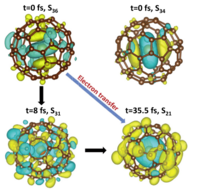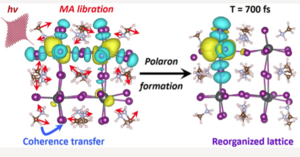Dr. Mohamed El-Amine Madjet

Fields of interest | Photo-induced processes in Energy Materials |
| Publications | Google Scholar |
Research
Energy and charge transfer processes in photosynthetic complexes and in various materials for energy applications. Light-matter interactions: investigating electronic processes in materials triggered by the interaction with light with a main focus on applications in photochemistry, photovoltaics and sensors. Develop and adapt codes to address different Chemical and Physical processes. Screening organic molecules for organic redox flow battery applications. Investigation of the effect of the functional groups on the electrochemical activity of carbon-based electrode for vanadium flow battery applications.

Electron relaxation is studied in endofullerene Mg@C60 after an initial localized photoexcitation in Mg by nonadiabatic molecular dynamics simulations. Two approaches to the electronic structure of the excited electronic states are used: (i) an independent particle approximation based on a density-functional theory description of molecular orbitals and (ii) a configuration-interaction description of the many-body effects. Both methods exhibit similar relaxation times, leading to an ultrafast decay and charge transfer from Mg to C60 within tens of femtoseconds. Method (i) further elicits a transient trap of the transferred electron that can delay the electron-hole recombination. Results shall motivate experiments to probe these ultrafast processes by two-photon transient absorption or photoelectron spectroscopy in gas phase, in solution, or as thin films.

The success of organic−inorganic perovskites in optoelectronics is dictated by the complex interplay between various underlying microscopic phenomena. The structural dynamics of organic cations and the inorganic sublattice after photoexcitation are hypothesized to have a direct effect on the material properties, thereby affecting the overall device performance. Here, we use ultrafast heterodyne-detected two-dimensional (2D) electronic spectroscopy to reveal impulsively excited vibrational modes of methylammonium (MA) lead iodide perovskite, which drive the structural distortion after photo-excitation.
